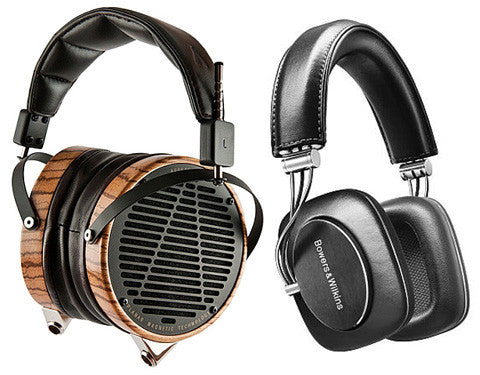- Continue Shopping
- Your Cart is Empty

The Difference Between Open-Back and Closed-Back Headphones
The right high quality headphones can greatly improve your listening experience and make mixing and editing more accurate and enjoyable. Headphones generally come in two different headphone styles: open-back and closed-back. Choosing which design best suits you depends on your needs. The first step to deciding which design is best for you is understanding the difference between open-back and closed-back headphone styles. Read on to learn the difference between open-back and closed-back headphones to help you successfully choose the right design for you.
Open-Back Headphones
Both sides of open-back headphones are open and there is no barrier or housing between the drivers and outside noise. This lets air pass through the headphones more freely and means there isn’t any sound isolation. The lack of sound isolation makes open-back headphones unsuitable for using in crowded noisy places. However, this also means you will have a much more natural, open sound with wider stereo imaging. The audio will sound more airy and spacious instead of isolated and closed. Open-back audio can be compared to sounding like you’re actually sitting in a seat in a large room listening to a live performance and closed-back audio can be compared to if you were hearing someone talking to you from the other end of a telephone.
Some people prefer the more open free sound of open-back headphones if they don’t need the sound isolation of closed-back headphones and are generally just going to be using them in a quiet place where any background noises won’t be disturbing.
Open-back headphones are great for when you do need to listen to noise coming from around you as well as the audio coming from your headphones, such as if you need to listen to surrounding instruments or vocals while wearing your headphones, multi-tasking or needing to listen to others talking around you while listening to the audio coming from your headphones. With open-back headphones, others can hear the audio coming from your headphones as well. Which, depending on your needs and circumstances, could either be an advantage or disadvantage to you. Usually when someone chooses high quality open-back headphones, such as the EL8 Open-Back by Audeze, it’s for the preferred sound quality and the lack of need for high sound isolation.
Open-back headphones are not the right choice for those looking for sound isolation and wanting to listen to music or any other audio while in a crowded or noisy environment, but are instead an excellent choice for audio engineers who mix and/or edit audio using headphones and want to achieve the most accurate and natural sound possible.
Closed-Back Headphones
Closed-back headphones feature a fully covered housing over the driver on both sides of the headphones instead of featuring speaker grilles with holes for air to pass through like with the open-back design. This design makes for superior sound isolation. High quality closed-back headphones, such as the comfortable luxurious EL8 Titanium by Audeze, are the perfect choice for when you’re trying to concentrate solely on the audio coming from your headphones and want to completely cancel out any outside noise. Closed-back headphones create a seal around the ear that maximizes sound isolation and separates your headphone audio from any background noise around you. Closed-back headphones are excellent for blocking out any outside noise in a crowded place and also keep others from hearing your audio as well, giving you the ultimate uninterrupted private audio experience.
This sound-isolating design is a great choice for gamers because the audio from your headphones won’t get picked up by your microphone and confuse other players. This same advantage makes closed-back headphones the perfect match for musicians and podcasters when recording as well.
There are many benefits of both open-back and closed-back headphones. Which one benefits you the most simply depends on your personal audio needs. Choosing the right headphones can make all the difference when it comes to maximizing your auditory experience.






Modern Speakers
Author